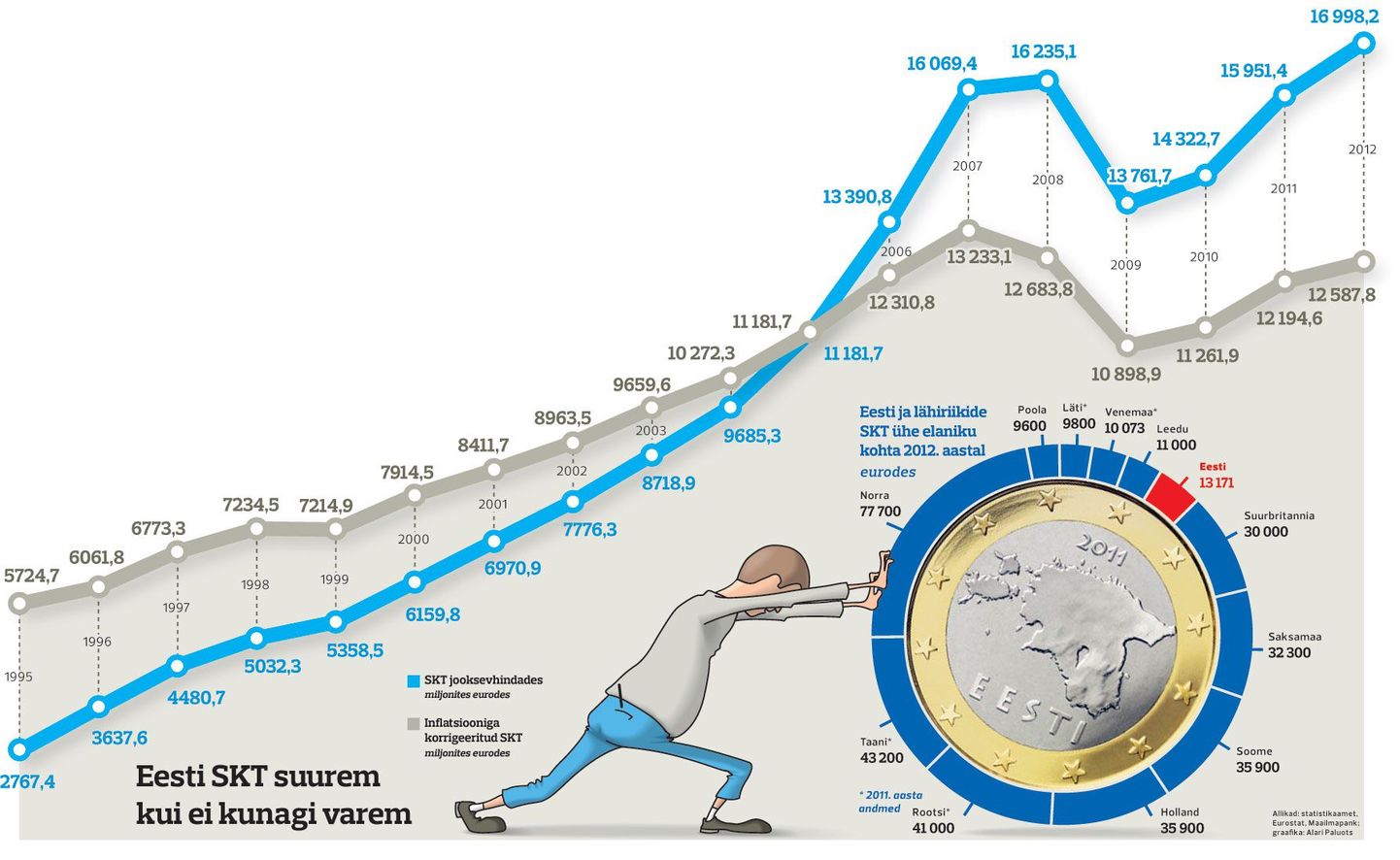
Last year’s Estonian gross domestic product (GDP) amounted to nearly €17bn, beating boom-time levels.

Last year’s Estonian gross domestic product (GDP) amounted to nearly €17bn, beating boom-time levels.
€17bn is an impressive figure. The more so, considering the slightly over €16bn boom-time record. The joy is, however, somewhat spoilt by the fact that, adjusted to inflation, the numbers remain below boom years’ levels. The difference is not vast and it is also important to remember that while the boom-time-bubble was built on loans, now we are standing on more solid economic activity.
«I’d remind you that the biggest SKT in world history was enjoyed by Estonia a day before monetary reform, as inflation rose to 1,000 per cent,» comments LHV bank economist Heido Vitsur. «It’s not that dramatic now, but in recent years inflation has stayed at 3-4 per cent levels.» Or, as he points out: a man is not growing taller by cutting a few centimetres off the inch rule, every year.
«I do understand the people who can’t see why there is not as much wealth in times of crisis,» continued Mr Vitsur. «But there’s not as much produce as in times of crisis, for the same amount of money contains less produce.»
The economist added that people certainly feel the economic situation differently, even for the reason of differing price fluctuations. And, therefore, people find themselves in differing economic situations. «Considering that we fell quite deep, almost 20 per cent in two years, we are well on our way out of that deep hole,» continued Mr Vitsur. «But here’s a little «but» – the wealth that we had in 2007 and 2008, it had much air in it. Loaned money is no basis for sustainable growth.»
Madis Aben, economist at Ministry of Finance, said that €17bn doesn’t mean much to people, containing both real growth and price rise. A person still consumes litres of milk and loaves of bread.
«GDP ought to reflect development of wellbeing,» he said. «Wellbeing comes from consumption. These last years, economic growth has been faster than restoration of private consumption, wherefore the GDP growth figure paints a too rosy picture. People’s everyday life, materially speaking, has not improved quite like that.»